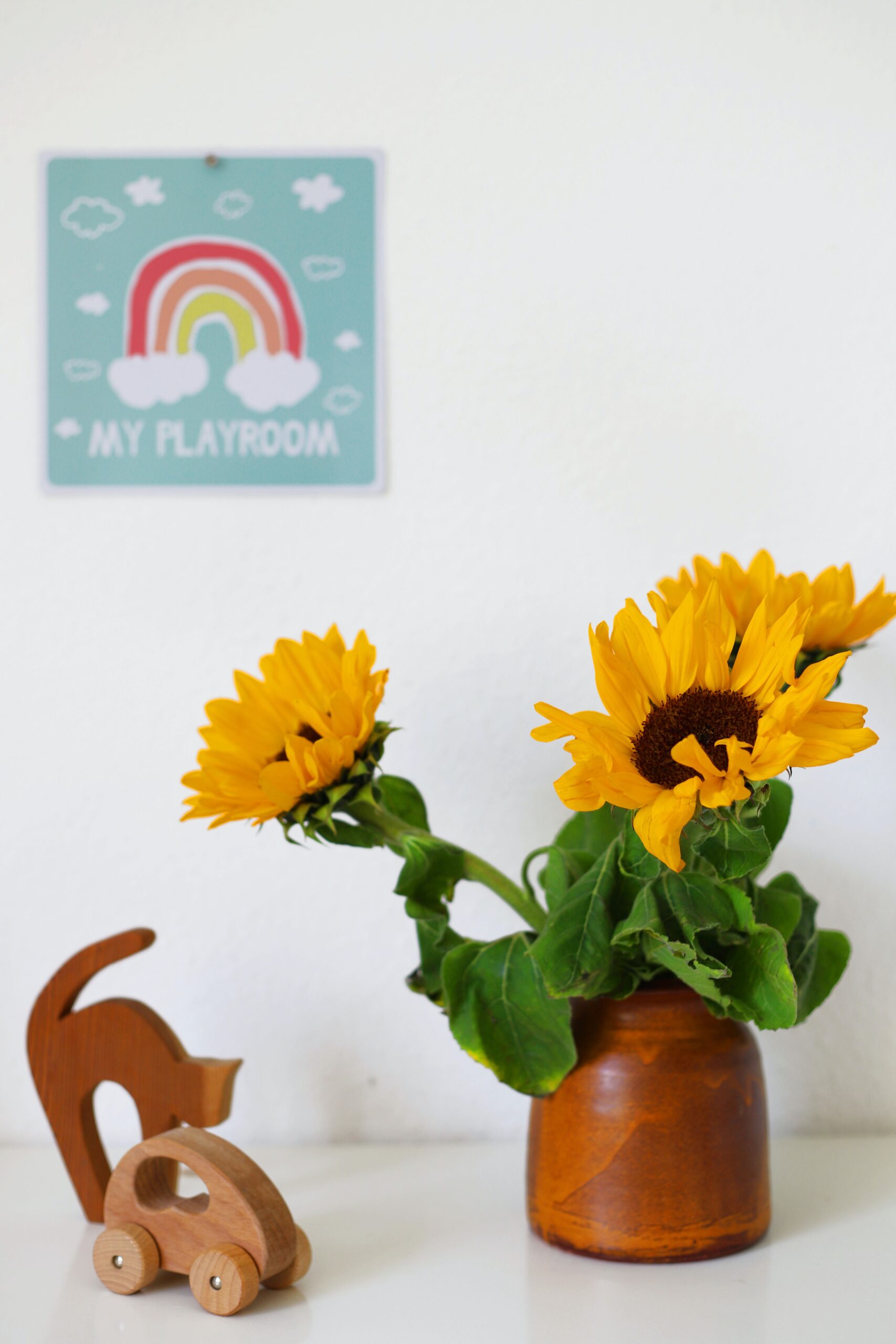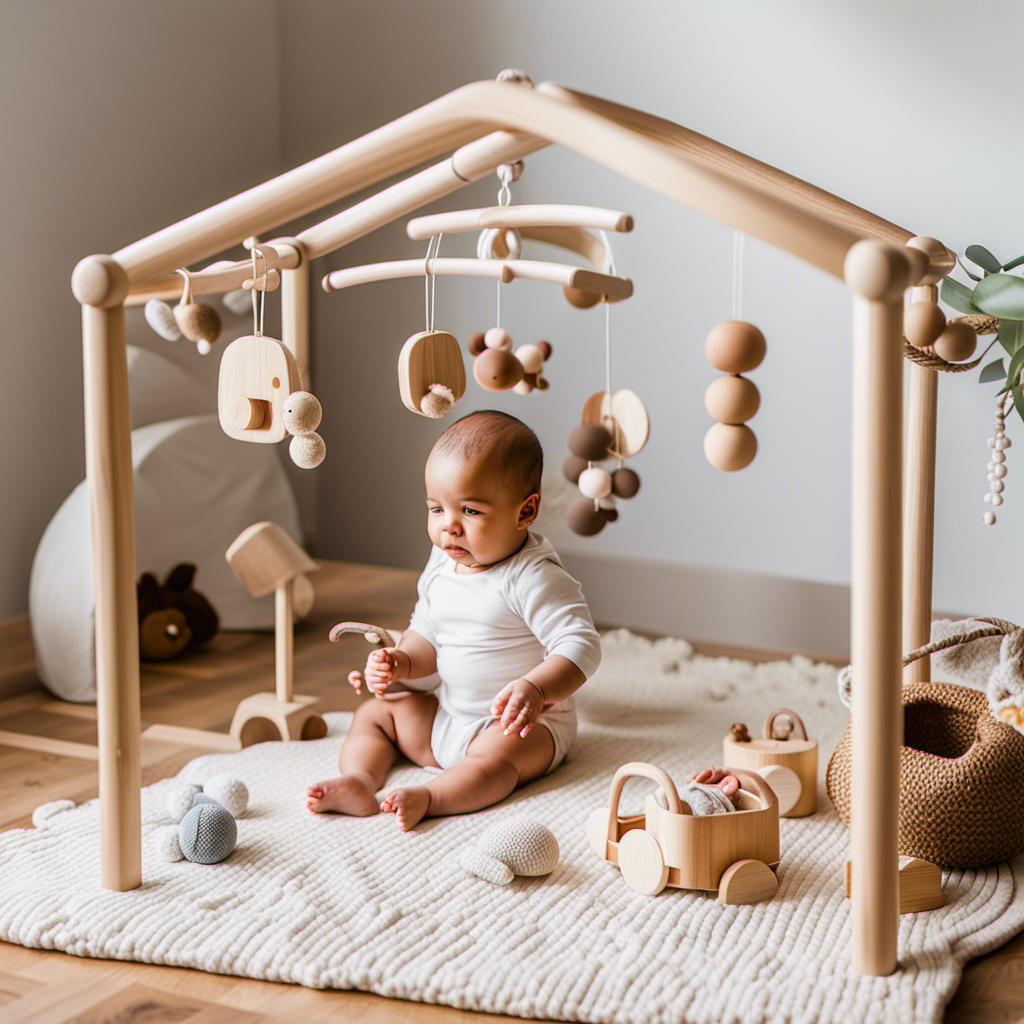Do concerns about the safety of your children’s toys weigh on your mind? We recognize how crucial it is to safeguard our young ones.
That’s why we’ve put together this comprehensive guide to help you choose safe, non-toxic toys for your children. With our expertise and attention to detail, we’ll provide you with all the information you need to make informed decisions.
From the benefits of Montessori toys to the characteristics of safe materials, we’ve got you covered.
Let’s dive in and ensure the well-being of our precious ones together.
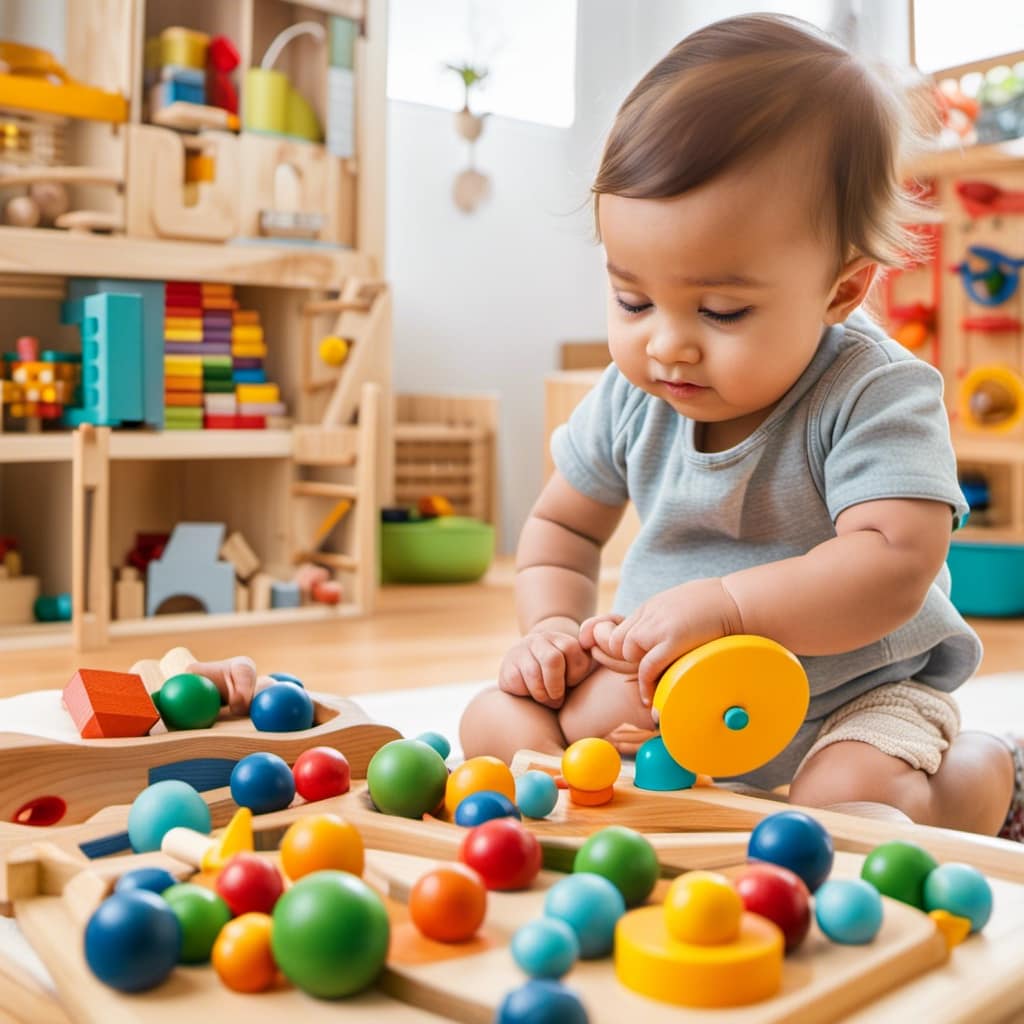
Key Takeaways
- Montessori toys promote independent learning, creativity, problem-solving skills, and sensory experiences.
- Safe materials for toys include wood, plastic, fabric, and metal.
- Choose toys made from non-toxic materials like sustainably sourced wood or natural fabrics.
- Prioritize eco-friendly options, avoid materials that may pose health risks, and consider ease of cleaning and environmental impact.
Benefits of Montessori Toys
What are the benefits of Montessori toys for our children?
Montessori toys offer several advantages that promote the educational development of our little ones. These toys are specifically designed to stimulate cognitive, physical, and social skills in a hands-on and interactive manner.
One of the main advantages of Montessori toys is their focus on promoting independent learning. By allowing children to explore and manipulate objects, these toys foster creativity, problem-solving skills, and decision-making abilities.
The educational value of Montessori toys lies in their ability to provide sensory experiences that engage multiple senses, aiding in the development of fine motor skills and hand-eye coordination.
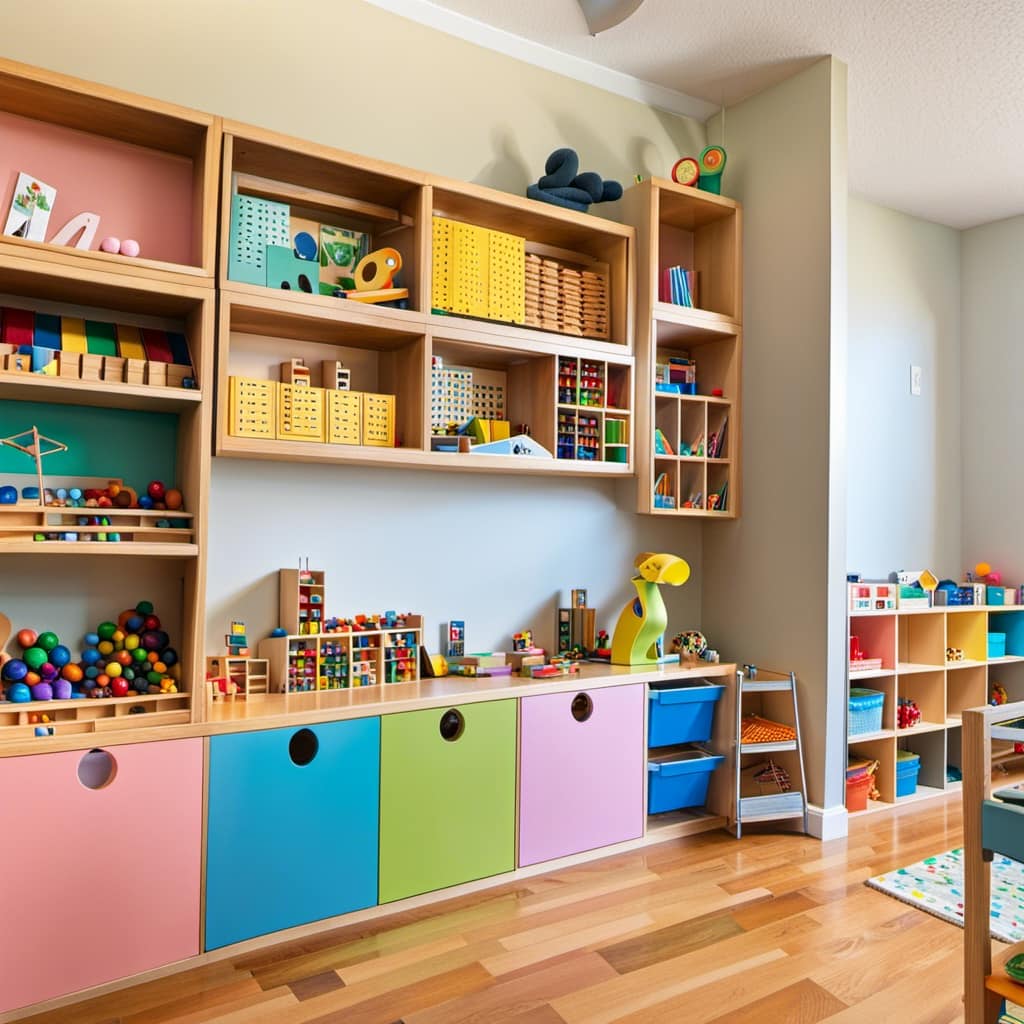
Additionally, these toys encourage concentration and patience, as children engage in activities that require focus and attention.
Characteristics of Safe Materials
When it comes to choosing safe non-toxic toys for our children, it is important to consider the characteristics of the materials used in their construction. Understanding the advantages and disadvantages of different materials can help us make informed decisions. Here is a table that outlines the characteristics of common toy materials:
| Material | Advantages | Disadvantages |
|---|---|---|
| Wood | Durable, natural, non-toxic, and sustainable | Can splinter or crack if not properly made |
| Plastic | Lightweight, easy to clean | Can contain harmful chemicals like BPA |
| Fabric | Soft, cuddly, and safe for young children | Can pose a choking hazard if not age-appropriate |
| Metal | Sturdy and long-lasting | Can be sharp or heavy for young children |
Non-Toxic Options for Montessori Toys
As we delve into the topic of non-toxic options for Montessori toys, it’s crucial to continue our exploration of safe materials, ensuring that our choices align with the principles of safety and sustainability.
When it comes to Montessori toy recommendations, it’s important to select toys that are made from non-toxic materials. These materials should be free from harmful chemicals such as lead, phthalates, and BPA.
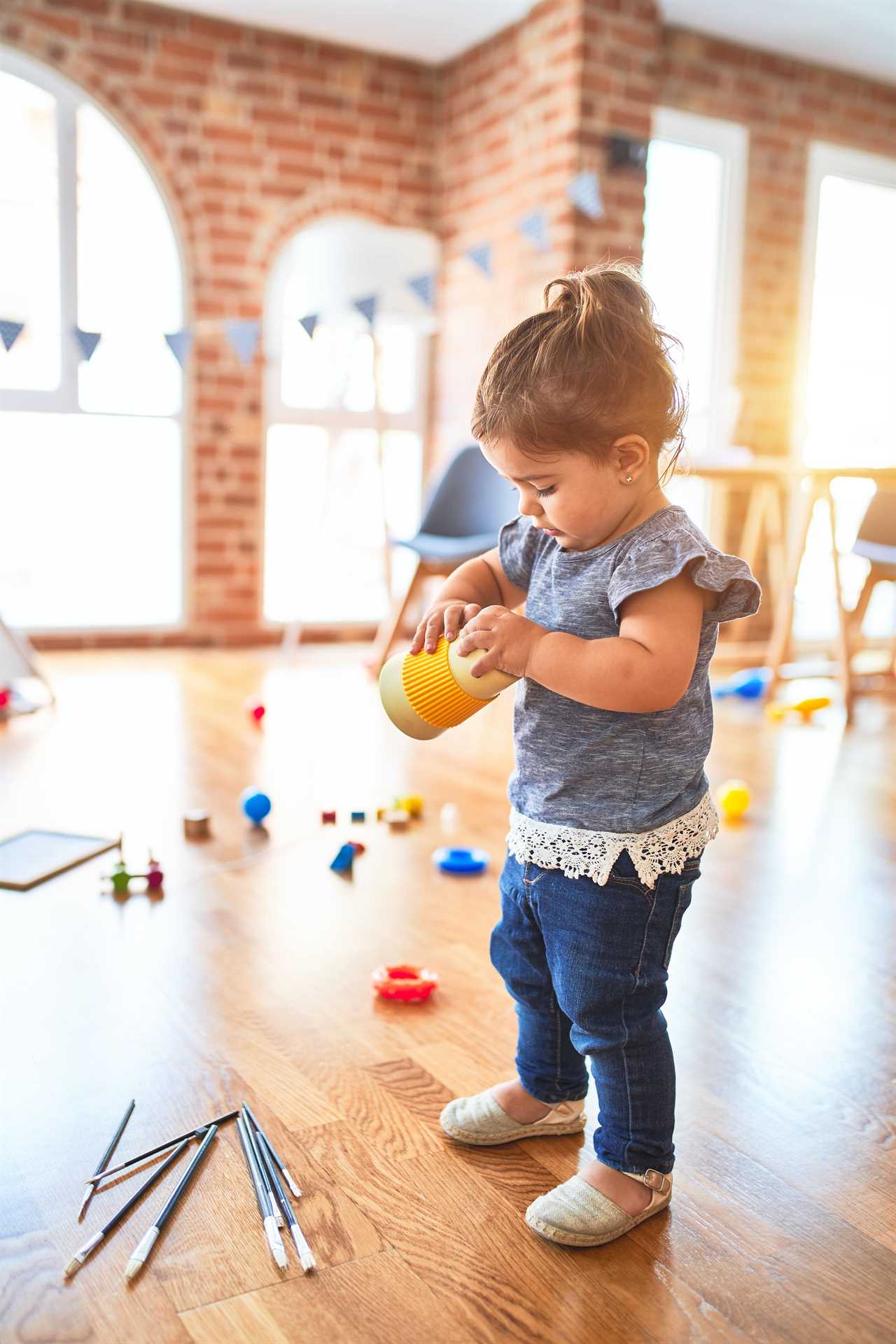
Opting for wooden toys, specifically those made from sustainably sourced wood, can be a great choice as they’re durable, natural, and safe for children to play with.
Another popular option is toys made from natural fabrics like organic cotton or bamboo. These materials are soft, hypoallergenic, and non-toxic.
Factors to Consider When Choosing Materials
Now let’s examine the key factors we should consider when selecting materials for safe and non-toxic toys.
It’s crucial to prioritize eco-friendly options to minimize the impact on the environment. Look for toys made from sustainable materials such as wood sourced from responsibly managed forests or recycled plastic.
![]()
Another important consideration is to avoid materials that may pose potential health risks to children. Stay away from toys made with lead, phthalates, BPA, or other harmful chemicals. Opt for toys that are labeled as non-toxic and meet safety standards set by regulatory agencies.
Additionally, choose toys that are easy to clean and maintain to ensure long-lasting use.
By carefully considering these factors, we can select materials that not only prioritize children’s safety but also promote a healthier planet.
Now, let’s explore some recommended non-toxic brands.
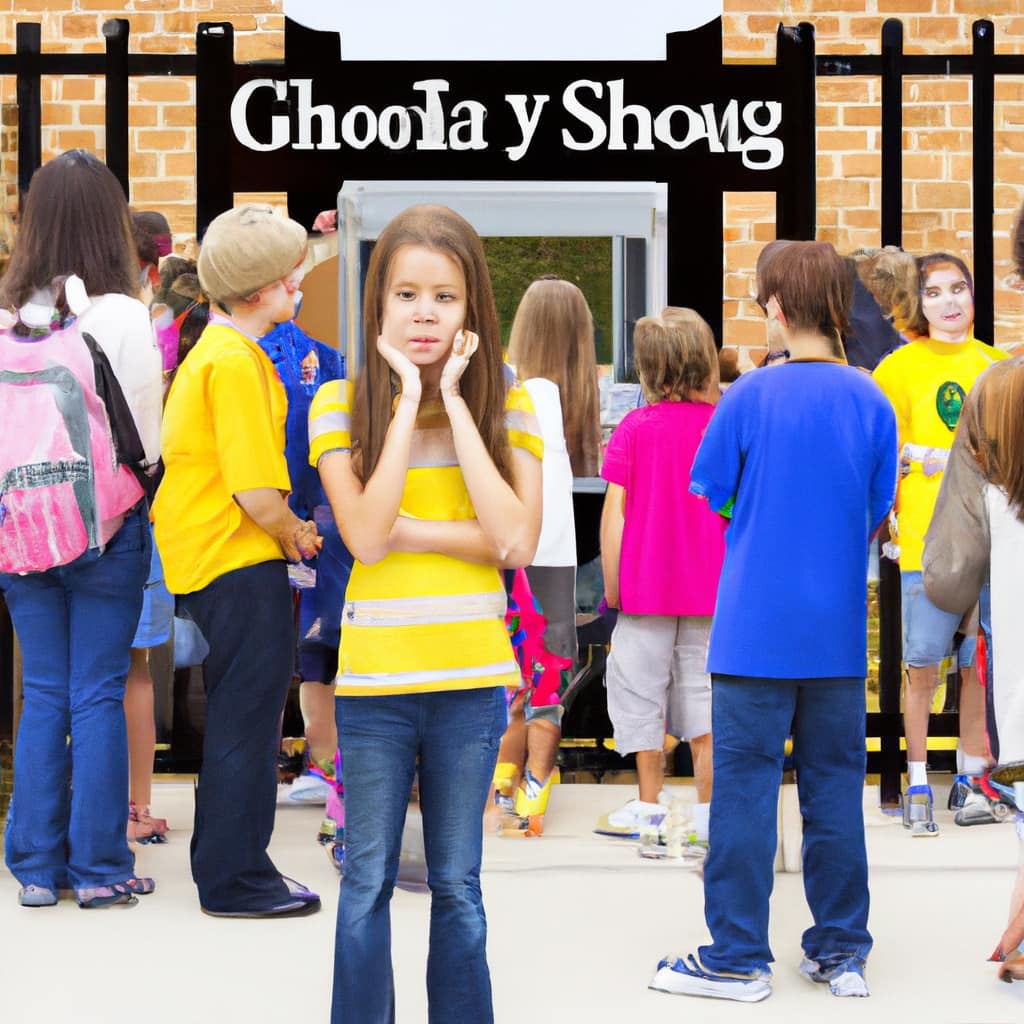
Recommended Non-Toxic Brands
Now, let’s delve into some non-toxic brands that we recommend for safe and eco-friendly toys. These brands prioritize ethical sourcing and eco-friendly manufacturing practices, ensuring that your child’s playtime isn’t only fun but also safe for the environment.
Here are three brands that stand out in terms of their commitment to non-toxic toys:
-
PlanToys: This brand is known for using sustainable materials such as rubberwood and non-toxic, water-based dyes. They also have a strong focus on eco-friendly manufacturing processes, minimizing waste and energy consumption.
-
Green Toys: With a mission to create toys made from 100% recycled materials, Green Toys is a great choice for eco-conscious parents. Their toys are free from phthalates, BPA, PVC, and other harmful substances.
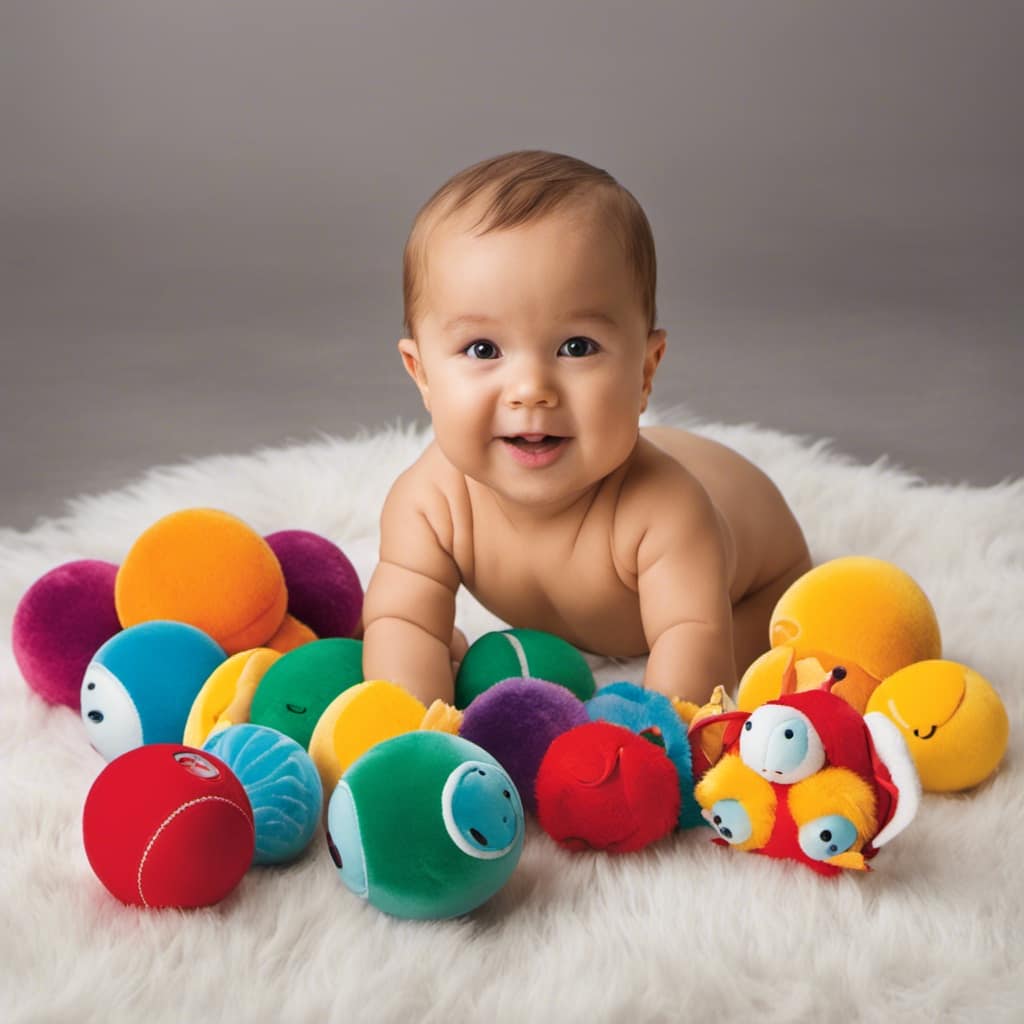
-
Hape: Hape toys are made from sustainable materials like bamboo and FSC-certified wood. They prioritize ethical sourcing and have strict safety standards to ensure that their toys are non-toxic and safe for children.
Frequently Asked Questions
Are Montessori Toys Only Suitable for a Specific Age Group?
Montessori toys are not limited to a specific age group. They are designed to cater to the developmental needs of children at different stages. Montessori toys focus on hands-on learning and independent exploration, unlike traditional toys.
How Can I Ensure That the Materials Used in Montessori Toys Are Safe for My Child?
To ensure the materials used in Montessori toys are safe for your child, we thoroughly research and select toys made from non-toxic materials. Exploring the benefits of Montessori toys for child development helps us choose the right toys for each age and interest.
Are There Any Specific Guidelines or Certifications to Look for When Choosing Non-Toxic Toys?
When choosing non-toxic toys, it’s important to look for specific certifications and safety standards. These guidelines ensure that the materials used in the toys are safe for children to play with and free from harmful substances.

What Are Some Common Materials Used in Non-Toxic Montessori Toys?
When choosing non-toxic Montessori toys, common materials include natural wood, cotton, and metal. These materials offer benefits such as durability and sensory stimulation, but may have drawbacks like potential choking hazards. Incorporating Montessori principles into playtime involves promoting independence and hands-on learning.
Can You Provide Any Tips on How to Clean and Maintain Non-Toxic Toys to Ensure Their Safety Over Time?
To ensure the safety of non-toxic toys over time, we recommend regularly cleaning them using mild soap and water. Proper toy storage, such as keeping them in a clean and dry place, can also help maintain their safety and longevity.
Conclusion
In conclusion, when it comes to choosing toys for our children, it’s crucial to prioritize their safety and well-being. By opting for non-toxic and Montessori toys, we can provide them with a safe and enriching playtime experience.
Considering factors such as material characteristics and recommended non-toxic brands can help us make informed decisions. Let’s ensure that our little ones have access to toys that aren’t only fun but also safe for their development.
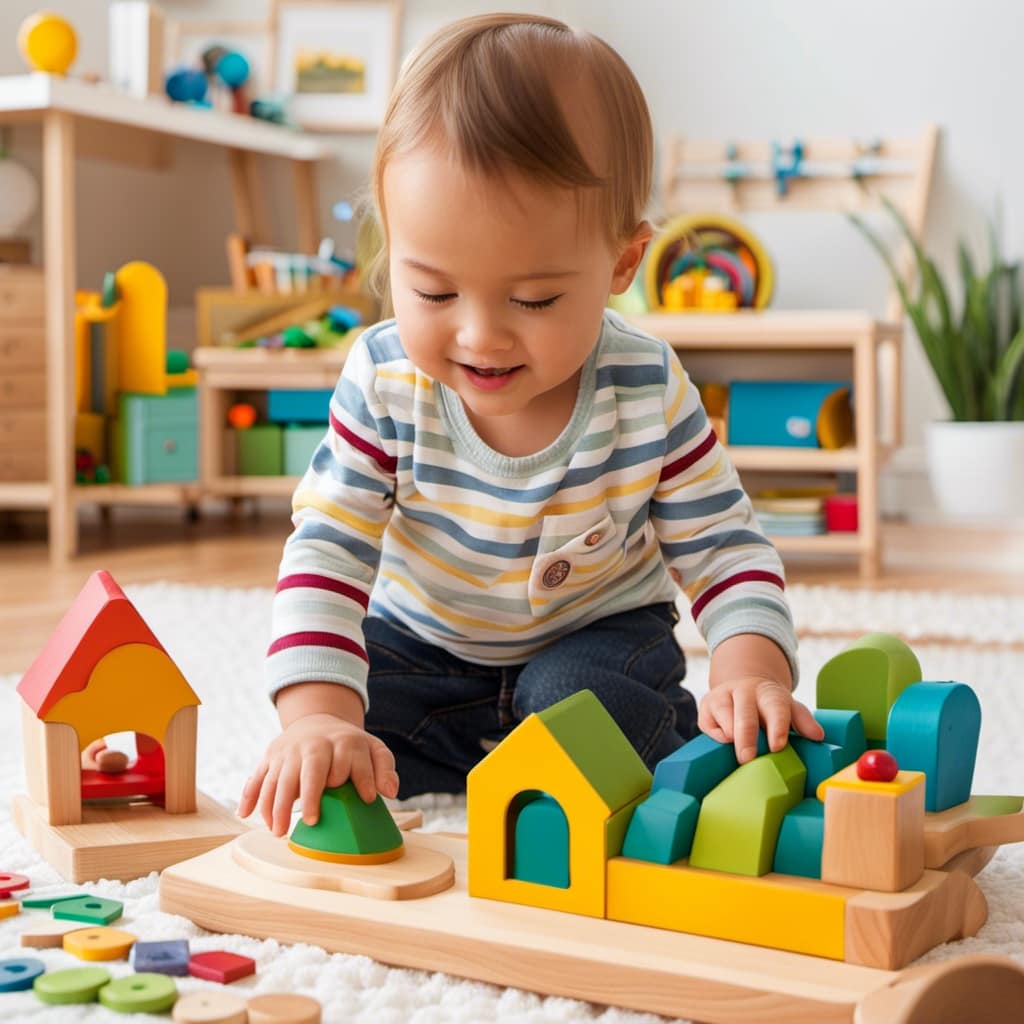
Mila, a gifted writer with a heart brimming with enthusiasm for child development and playful learning, is the creative force behind the enchanting narratives and insightful articles that grace Toddler Ride On Toys. With a background in early childhood education and a genuine passion for nurturing young minds, Mila weaves words that captivate, educate, and inspire parents, caregivers, and educators.



